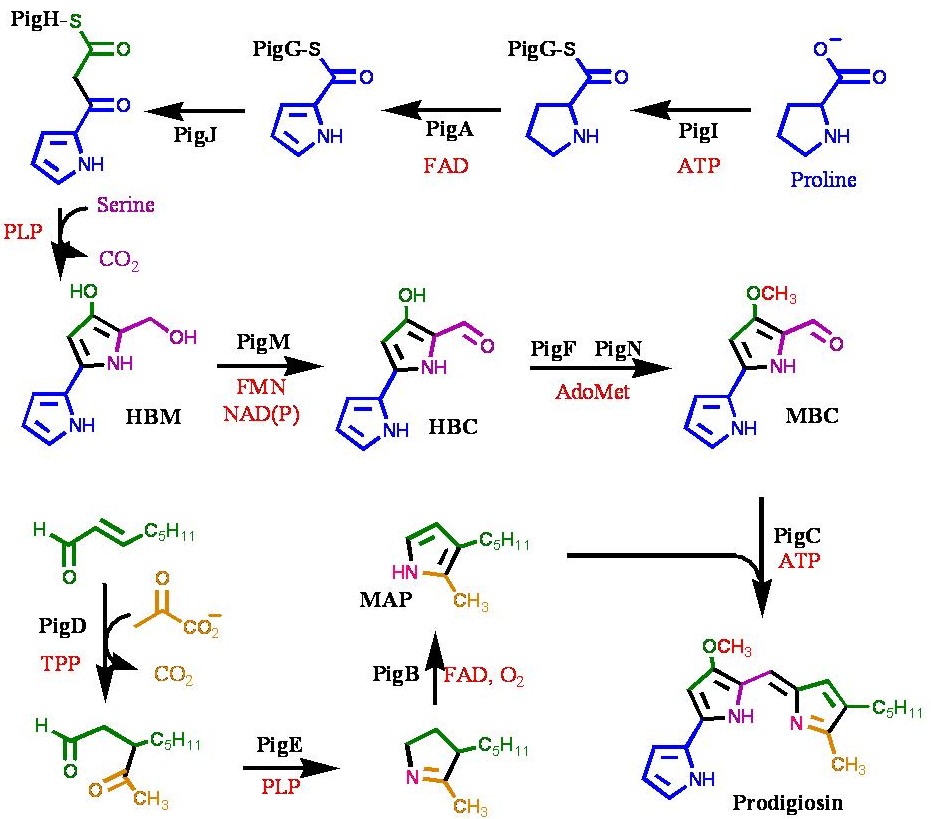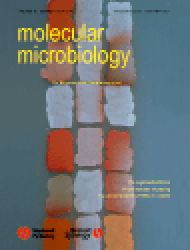108
N. R. Williamson, H. T. Simonsen, R. A. A. Ahmed, G. Goldet, H. Slater, L. Woodley, F. J. Leeper and G. P. C. Salmond,
"Biosynthesis of the red antibiotic, prodigiosin, in Serratia: identification of a novel 2-methyl-3-n-amyl-pyrrole (MAP) assembly pathway, definition of the terminal condensing enzyme, and implications for undecylprodigiosin biosynthesis in Streptomyces."
Molec. Microbiology, 2005, 56 (4), 971-989.
Full Text
The biosynthetic pathway of the red-pigmented antibiotic, prodigiosin, produced by Serratia sp. is known to involve separate pathways for the production of the monopyrrole, 2-methyl-3-n-amyl-pyrrole (MAP) and the bipyrrole, 4-methoxy-2,2'-bipyrrole-5-carbaldehyde (MBC) which are then coupled in the final condensation step. We have previously reported the cloning, sequencing and heterologous expression of the pig cluster responsible for prodigiosin biosynthesis in two Serratia sp. In this article we report the creation of in-frame deletions or insertions in every biosynthetic gene in the cluster from Serratia sp. ATCC 39006. The biosynthetic intermediates accumulating in each mutant have been analysed by LC-MS, cross-feeding and genetic complementation studies. Based on these results we assign specific roles in the biosynthesis of MBC to the following Pig proteins: PigI, PigG, PigA, PigJ, PigH, PigM, PigF and PigN. We report a novel pathway for the biosynthesis of MAP, involving PigD, PigE and PigB. We also report a new chemical synthesis of MAP and one of its precursors, 3-acetyloctanal. Finally, we identify the condensing enzyme as PigC. We reassess the existing literature and discuss the significance of the results for the biosynthesis of undecylprodigiosin by the Red cluster in Streptomyces coelicolor A3(2). |


|















